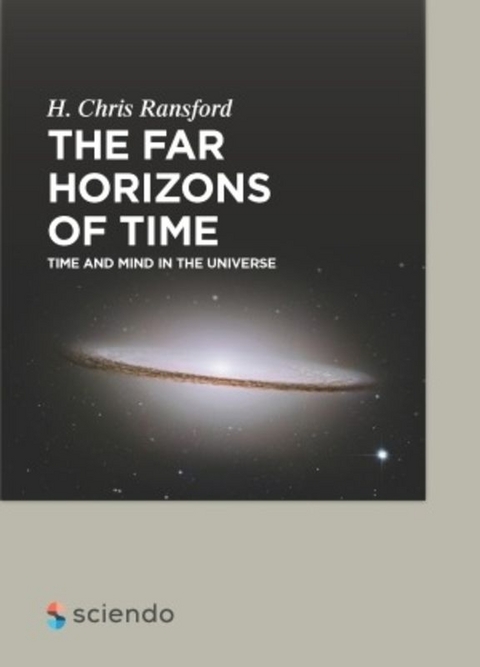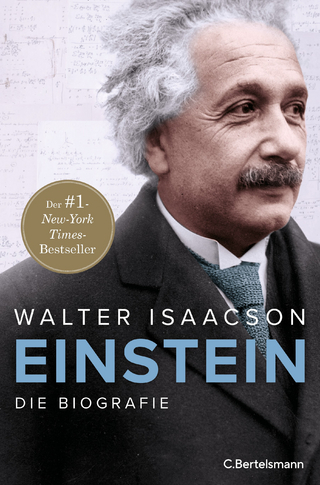
The Far Horizons of Time
De Gruyter Open (Verlag)
978-3-11-044027-0 (ISBN)
H. Chris Ransford, INPG, Grenoble, France
"Time is the river in which runs our life. We are all quite familiar with time. But time is a mystery for physics. Chris Ransford, in his book "The Far Horizons of Time", invites us to an almost poetic hike through the most advanced concepts of relativity and quantum mechanics. This trek makes us visit some really strange, sometimes even weird parts of our world; Alice's promenade in the Wonderland appears as quite boring once the reading of the book is finished. In the world of relativity time contracts or expands depending on the direction one is walking toward; even if the universe were to be infinite you can only know about a finite sphere; strange Black Holes do cannibalize all matter and light passing by, but they could as well be the cradle for new universes. While relativity applies to astronomic objects, quantum mechanics helps us apprehend objects with the size of an atom. This world is mostly made out of vacuum in which photons can spontaneously appear from nowhere as long as they live only very short periods of time. Particles can cross energy barriers, like a ghost can cross a wall. More, two photons can share a same wave function: if one acts on one of these, then the properties of the other one are instantaneously modified in a fully predictable way. This happens even if the photons are appart at such a large distance one from the other that communication at the speed of light between them is impossible for explaining the phenomenon. Physics cannot escape metaphysics. It uses principles that are not laws and cannot be demonstrated: "energy is a conservative quantity" or "the action is minimal during dynamical evolutions", for example. The Occam's razor principle is even fuzzier, stating that the best explanation of any physical effect is the one that needs the minimum number of hypotheses.
Chris Ransford smoothly navigates over the ocean of the strange effects physics is made of, avoiding the pitfalls dug by the principles and leading us along multiple universes that appear everywhere from nowhere and no when. At the end of the journey we face an animist definition of time that directly connects us to the Paleolithic era. Fascinating."
Dr. Charles Hirlimann, Institut de Physique et Chimie des Matériaux de Strasbourg, France
"The book 'The Far Horizons of Time' by Chris Ransford covers the paradoxes of time. These paradoxes relate to the human understanding of the Universe, seen as a whole in its development in which mankind plays its own part, however small. To that end, the author uses aspects of quantum science as may apply to both time and life itself. Considering that after Einstein's theory of relativity time is no longer seen as a separate dimension, but as closely intertwined with space, the distinctiveness of 'The Far Horizons of Time' lies in how it looks neutrally at all possible renditions of what time is, from more ancient ideas to the multiverse. The latter, seen from the Tryon scenario, makes a difference between time and space: while space can bend, can duplicate into another baby-universe, can create small amounts of a force called torsion (67) - in one word, space can be distorted - time is still something different, something parallel with space. The apparent arrow of time shows time as invariant, going in one direction only, without fluctuations, from past to the future, but the human mind (the 'ultimate quantum machine') is the only real factor that can distort time and create 'bubbles of time' (81)."
Cosmin Tudor CIOCAN, PhD, Department of Theology, Ovidius University of Constanta, Constanta, Romania
"Analyzing time has been a recurrent topic of research in physics. This book discusses many oddities and subtleties of time from the point of view of modern theoretical physics, including relativity and quantum physics. Furthermore, it includes an interesting discussion of the role of mathematics according to the Comtean hierarchy and the role of infinity in the ideas related to time. In spite of its brevity, the book is rather dense and goes deep into many concepts, which are explained in a rather clear manner without loss of rigor. The author also makes some explorations on quantum effects of the mind, though he also considers very modern theories such as time in Gödel universes, the possible existence of other instances of a big bang and multiple parallel universes to finalize with a discussion of emergent phenomena and the mind. The reader of this book will enrich himself with a very broad and critical overview of many modern ideas and developments in theoretical physics. A large collection of end notes clarifying many concepts discussed in the book and a rich list of related books for further reading is included at the end, so that the interested reader may explore this field of physics research."
Miguel A.F. Sanjuán, Department of Physics, King Juan Carlos University, Madrid, Spain
"This pretty book attempts to relate two of the greatest mysteries of Science,
the nature of time and the human brain. Although these intriguing arguments
have been analyzed by various authors and scientists, I find the approach of
this book original. In addition, the author discusses some fields of enquiry
that can have been overlooked by previous authors. In order to achieve his
ambitious result, the author reviews and discusses at popularizing level various interesting issues of maths, physics and cosmology, like infinity & infinities, quantum mechanics, wave functions, Heisenberg's uncertainty principle, Gödel universes, big bang, bubbles of time, black holes, etc. In general, this book is a very interesting and enjoyable reading for both of experts and common readers."
Christian Corda, Dipartimento di Fisica, Scuola Superiore di Studi Universitari e Ricerca, "Santa Rita", San Pietro Infine (CE), Italy
| Erscheint lt. Verlag | 24.4.2015 |
|---|---|
| Zusatzinfo | 1 b/w ill., 1 b/w tbl. |
| Verlagsort | Warschau/Berlin |
| Sprache | englisch |
| Maße | 170 x 240 mm |
| Gewicht | 436 g |
| Themenwelt | Naturwissenschaften ► Physik / Astronomie ► Astronomie / Astrophysik |
| Sozialwissenschaften | |
| Schlagworte | Anthropic Principle • Bell's Inequality • Delayed choice • DGS • LEHRAMT1 • Mathematical • mathematical universe • Mathematics • Mechanik • mystery of time • Nienhaus • Physics • Physik • Physik, Astronomie • Popular science • Popular science, time, mystery of time, mathematical universe, space-time, quantum, delayed choice, • Popular science, time, mystery of time, mathematical universe, space-time, quantum, delayed choice, Bell's inequality, wave function, the brain's perception of time, saccades, anthropic principle • quantum • Quantum Physics • Relativity • Relativity and Gravitational Physics • saccades • Science • Space-time • the brain's perception of time • Time • wave function • Zeit / Zeitmessung |
| ISBN-10 | 3-11-044027-X / 311044027X |
| ISBN-13 | 978-3-11-044027-0 / 9783110440270 |
| Zustand | Neuware |
| Informationen gemäß Produktsicherheitsverordnung (GPSR) | |
| Haben Sie eine Frage zum Produkt? |
aus dem Bereich


